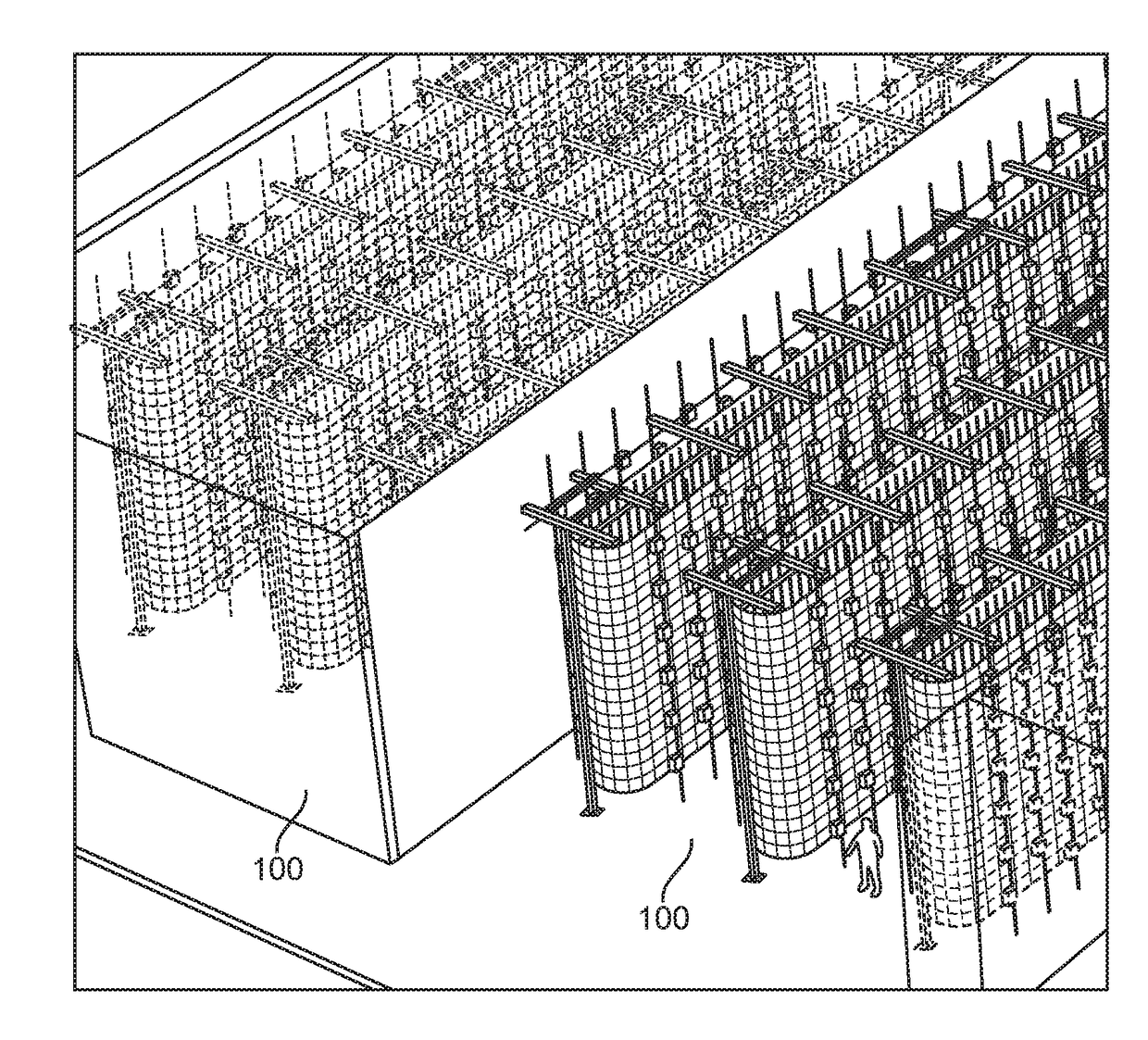Environmentally controlled vertical farming system
a vertical farming and environment-controlled technology, applied in the field of vertical hydroponic and aeroponic plant production apparatus and system, to achieve the effect of expanding the learning possibilities
- Summary
- Abstract
- Description
- Claims
- Application Information
AI Technical Summary
Benefits of technology
Problems solved by technology
Method used
Image
Examples
Embodiment Construction
[0072]Advancements in technology are making it feasible to control the effects of nature with the advent of “controlled indoor agriculture”. Improved efficiencies in space utilization, lighting, and a better understanding of hydroponics, aeroponics, crop cycles, and advancements in environmental control systems have allowed man to better recreate environments conducive for agriculture with the goals of greater yields per square foot, better nutrition and lower cost.
[0073]A multi-stage, plant growing system is configured for high density growth and crop yields and includes vertical growth columns, an enclosed controlled environmental growth chamber, interchangeable hydroponic plant growth modules, automated lighting, a nutrient supply system, an airflow source and a control system capable of machine learning wherein the crops are optimally spaced and continually staged in their planting cycles to provide an accelerated and continuous annual production yield. The columns are capable o...
PUM
 Login to View More
Login to View More Abstract
Description
Claims
Application Information
 Login to View More
Login to View More - R&D
- Intellectual Property
- Life Sciences
- Materials
- Tech Scout
- Unparalleled Data Quality
- Higher Quality Content
- 60% Fewer Hallucinations
Browse by: Latest US Patents, China's latest patents, Technical Efficacy Thesaurus, Application Domain, Technology Topic, Popular Technical Reports.
© 2025 PatSnap. All rights reserved.Legal|Privacy policy|Modern Slavery Act Transparency Statement|Sitemap|About US| Contact US: help@patsnap.com



